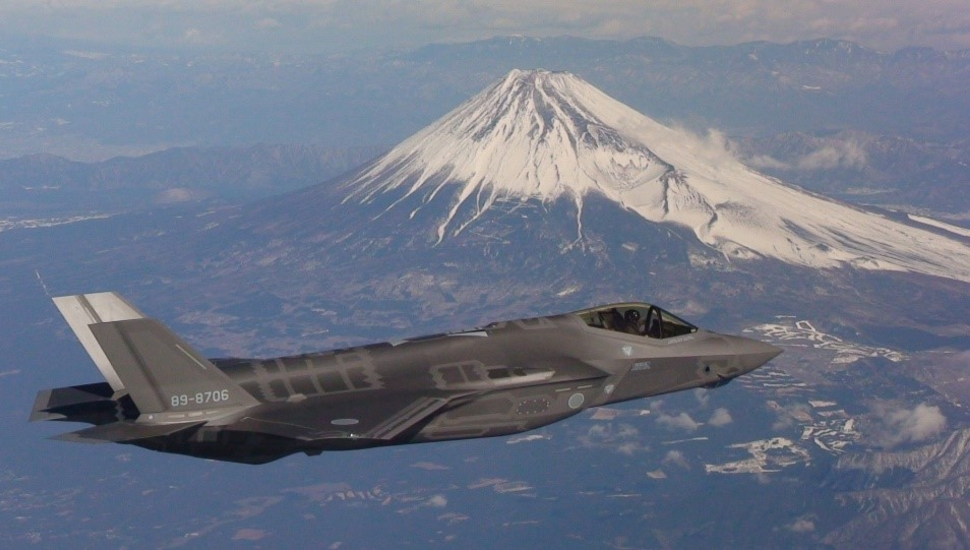The defence chiefs of the USA and Japan are confident that China won’t be able to recover pieces of the Lockheed Martin F-35A that crashed off the coast of Japan on 9 April.
A flurry of media reports had speculated that parts of the aircraft were vulnerable to discovery by the Chinese or Russian militaries, giving those countries’ armed forces an opportunity to exploit vulnerabilities or copy the fighter’s stealth technology.

Japanese Lockheed Martin F-35A Lightning II stealth fighter
F-35 Joint Program Office
The radar wake of the Japanese F-35A stealth fighter disappeared over the Pacific Ocean about 73nm (135km) east of Misawa air base on 9 April while practicing night-time training with three other F-35A jets. Parts from the F-35A’s twin tail was reportedly recovered by Japan, though the rest of the fuselage and the pilot’s body remain missing.
Acting Secretary of Defense Patrick Shanahan and Japanese Minister of Defence Takeshi Iwaya dismissed those concerns in a joint press conference about US-Japan military cooperation at the Pentagon on 19 April.
“We're supporting the investigation there, or the incident -- whatever you want to describe it as,” says Shanahan. “The Japanese have the lead there, and we're working very collaboratively with them, and we've got a lot of capability if what they have doesn't prove to be sufficient, okay?”
Speaking through a translator, Iwaya echoed the US Department of Defense’s belief.
“We don't have such [a] possibility, absolutely no,” he says. “We are conducting our surveillance and warning activity so that we can identify and find the missing aircraft.”
Should China or Russia recover bits of the F-35A they might gain critical insights into its radar, electronic warfare capabilities or stealth coatings, among other important military secrets. The USA is especially protective about the stealth fighter’s capabilities given the tens of billions of dollars already invested in the development of the aircraft and its advantages against adversaries’ radar and air defences.
Getting hands-on time with an adversary’s weaponry is the ultimate coup for military intelligence. For example, after the defection of a Soviet pilot flying a MiG-25P to Japan in 1976 the USA was able to dissemble the aircraft and draw conclusions about its capabilities, as well as the weaknesses of allied air defences against the jet.
Source: FlightGlobal.com






















